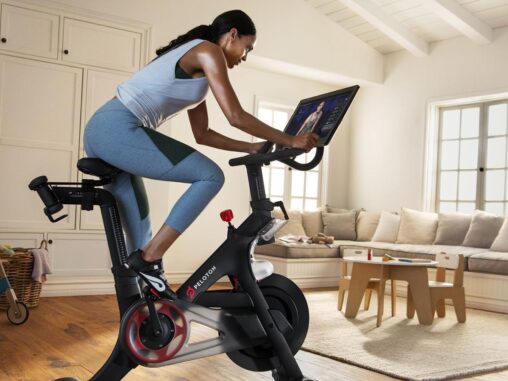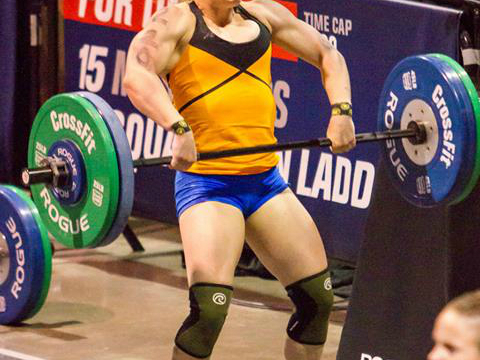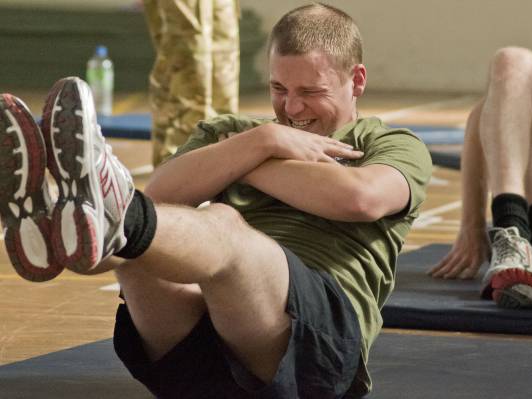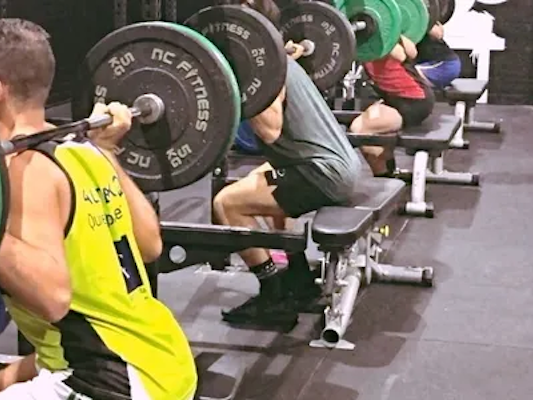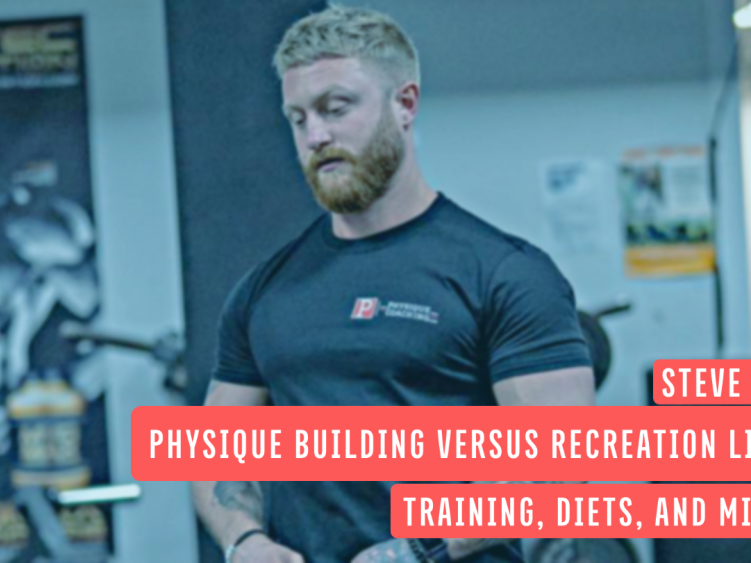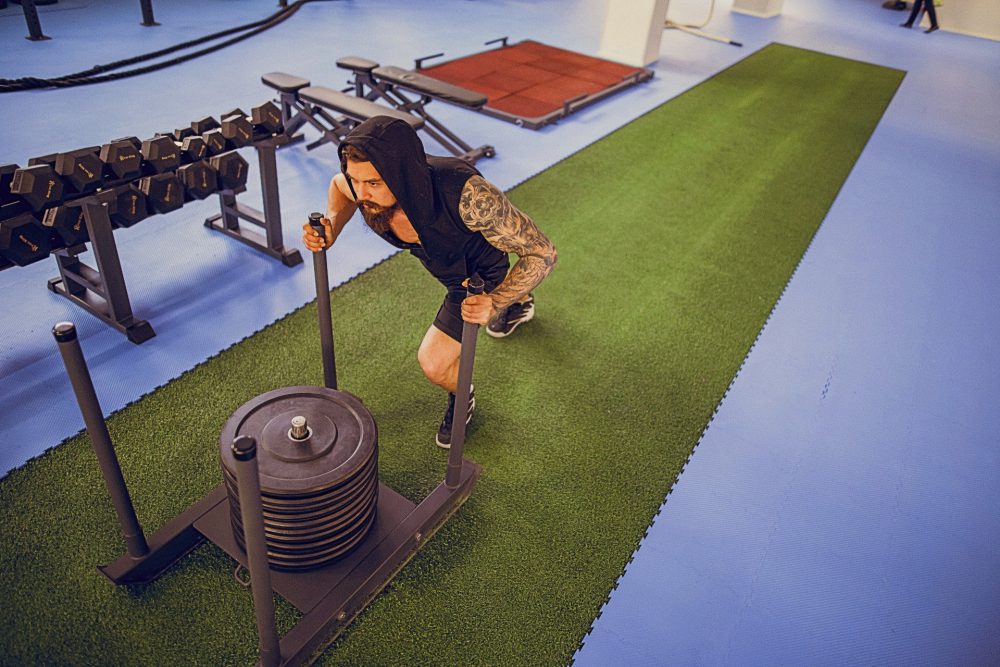In the event you’re studying this, you’re in all probability curious to know the way you need to use information to extend muscle measurement. A lot of you might be aware of VBT (velocity-based coaching) as a way to autoregulate coaching hundreds and supply visible suggestions throughout velocity and energy classes. However that’s not all velocity can do. There’s good proof that velocity might be efficient in offering on the spot suggestions throughout hypertrophy coaching classes.
Let’s have a look at two methods we will use velocity information to advertise muscle progress (and a 3rd manner that doesn’t require a monitoring device).
Proportion-based loading isn’t at all times correct.
1. Velocity-Primarily based Loading
In principle, percentage-based loading is nice. You check your one-rep max (1RM) and presto, you’ll be able to pinpoint precisely what load to make use of primarily based on a sure proportion. Sadly, percentages don’t stack as much as actuality. In actuality, a profitable lifter adjusts on the fly primarily based on feeling. Much less skilled lifters, although, will probably attempt to stick with the precise percentages and the precise 1RM that was examined eight weeks in the past even when it’s not the most effective factor for his or her progress.
“Many coaches and athletes are utilizing velocity to achieve power and energy, however even at these excessive ranges of sport, there are occasions when hypertrophy is necessary.”
Utilizing velocity may provide the goal perception you’re presently missing. For sure workouts, the analysis is sort of clear – there’s a excessive correlation (0.98) between a relative proportion load and velocity.1Which means that if you wish to prepare at 80% of your 1RM, there shall be a corresponding velocity output.
This isn’t a fluke both. In a single examine, over 100 strength-trained topics carried out a 1RM bench press check whereas researchers measured their motion velocity. Check out Desk 1. For every proportion you’ll discover an related velocity output. Simply to ensure this wasn’t as a result of likelihood, the researchers retested the themes at a later date and there was no distinction between the 2 classes.
Desk 1 – Relative Proportion Hundreds vs Velocity Outputs (González-Badillo & Sanchez-Medina 2010)
For these utilizing velocity-based instruments just like the PUSH band, that is nice information because it means that you can pinpoint precisely what velocity you need to be working with relying on the relative load your coach prescribed.
For instance, say you carried out a 1RM check (or an estimated check) for the bench press and it turned out to be 120kg. Now let’s say your coach has requested you to coach between 75-80% (have a look at Desk 2) of your 1RM – that load corresponds to 90-96kg. In week one, this can be the suitable load, however what about weeks two, three, and 4? Your 1RM will fluctuate and that 96kg could not be 80%.
Desk 2 – Coaching Targets and Loading Parameters
So, let’s do that as an alternative: Take a look at Desk 1 once more and discover the speed that corresponds to 75% and 80% – it’s 0.48 to 0.56. Now, once you carry out your first working set and the primary few reps are across the 0.7m/s mark, you’ll comprehend it’s time to maneuver up in weight. Merely modify the load till you discover the suitable weight for that depth and that session. Be aware: you need to at all times have a look at the primary few reps of a set, particularly throughout a hypertrophy program the place velocity will drop off throughout a set.
“Sadly, percentages don’t stack as much as actuality. In actuality, a profitable lifter adjusts on the fly primarily based on feeling.”
Desk 1 is a bit deceptive, although, as a result of it solely displays the bench press train. Every train can have a special velocity-load profile. That’s why you could have to create your individual individualized profiles in your large lifts (till analysis catches as much as these of us forward of it). This may be performed via a submaximal 1RM check utilizing a velocity-based device, which can mean you can create a load-velocity profile for any train.
2. Velocity Loss
Velocity loss is the proportion distinction between the quickest rep of a set and the slowest. We all know there are three key mechanisms for muscle tissues to develop. One among these is metabolic stress. Analysis utilizing velocity as an indicator of effort and fatigue reveals us there are completely different ranges in velocity loss for various coaching qualities.2 As an example, if velocity loss is between 40-60%, the focused coaching high quality shall be largely hypertrophy. Conversely, if the speed loss is lower than 20-25%, the coaching focus would largely fall beneath velocity and energy.
With velocity monitoring, we will nonetheless guarantee we’re getting sufficient of a stimulus to generate the specified coaching response with out killing ourselves within the course of. For instance, aiming for a lack of 60% too usually may spell catastrophe, whereas mixing in losses within the 40-45% vary could possibly be excellent.
Desk 3
Wanting on the desk above, you’ll discover that within the 7-rep set, the athlete was near that 60% drop in velocity whereas within the 5-rep set, there was a 41% drop. In these two instances absolutely the load was related, however within the 5-rep set, the person in all probability had 2-3 reps left within the tank. Even with out going to failure, there’s nonetheless a very good coaching impact when aiming for the 40% mark as an alternative of the 60% mark, and it could assist your subsequent coaching bouts.
3. Quantity
The most important and strongest athletes all have one factor in frequent in terms of their packages. Excessive coaching hundreds. Which means that monitoring quantity is extraordinarily necessary. There are numerous metrics that may mean you can monitor quantity however my favourite continues to be quantity load (or tonnage). To calculate this metric, all you want is primary multiplication expertise:
VL = Reps x Units x Load
Instance: I carry out a again squat for 3 units x 5 reps at 100kg, 120kg, and 140kg. This case is slightly trickier as it’s important to multiply the reps by every load after which take the sum:
100kg x 5 = 500kg
120kg x 5 = 600kg
140kg x 5 =700kg
Sum = 1800kg
Determine 1 supplies an instance of what quantity load would probably seem like over time. Fast tip: it’s unimaginable to count on to extend quantity load lifted in a linear method. That’s why you’ll see within the instance that quantity load has decreased within the final three weeks. This athlete was really tapering (i.e. attempting to peak for competitors).
Determine 1 – Quantity Load Throughout 16 Weeks
The objective would then be so as to add quantity load over the course of the week, month, 12 months, and so forth. Nearly all sport scientists will agree that is essential for will increase in measurement.
Abstract
Many coaches and athletes are utilizing velocity to achieve power and energy, however even at these excessive ranges of sport, there are occasions when hypertrophy is necessary. Understanding precisely what hundreds to make use of primarily based on a particular velocity and the drop in velocity throughout a set are two certain methods to advertise muscle progress whereas avoiding overtraining.
And whether or not you have got a velocity-based device or not, monitoring quantity via tonnage is straightforward and efficient. The Jap bloc nations have been doing it earlier than computer systems have been invented, so I’m certain you and I can spruce up on our multiplication expertise and take a look at it as nicely.
Extra Like This:
- Velocity Primarily based Coaching: Cease Guessing Your Weights and Reps
- Introductory Information to Velocity Primarily based Coaching
- Why You Ought to By no means Hit a 1RM Once more
- New on Breaking Muscle As we speak
References:
1. González-Badillo JJ, Sanchez-Medina L. “Motion Velocity as a Measure of Loading Depth in Resistance Coaching.” Int J Sports activities Med 31: 347-352, 2010.
2. Sanchez-Medina L, González-Badillo JJ. “Velocity Loss as an Indicator of Neuromuscular Fatigue throughout Resistance Coaching.” Med Sci Sport Exerc 43: 1725–1734, 2011.
3. Izquierdo M, Ibañez J, González-Badillo JJ, Häkkinen Okay, Ratamess NA, et al. Differential results of power coaching resulting in failure versus to not failure on hormonal responses, power, and muscle energy positive aspects. J Appl Physiol 100: 1647–1656, 2006.
4. Sanchez-Medina L, Gonzalez-Badillo JJ, Perez CE, Pallares JG (2014) Velocity- and power-load relationships of the bench pull vs. bench press workouts. Int J Sport Med 35:
209–216. doi:10.1055/s-0033-1351252.
Photograph 1 courtesy of Shutterstock.


